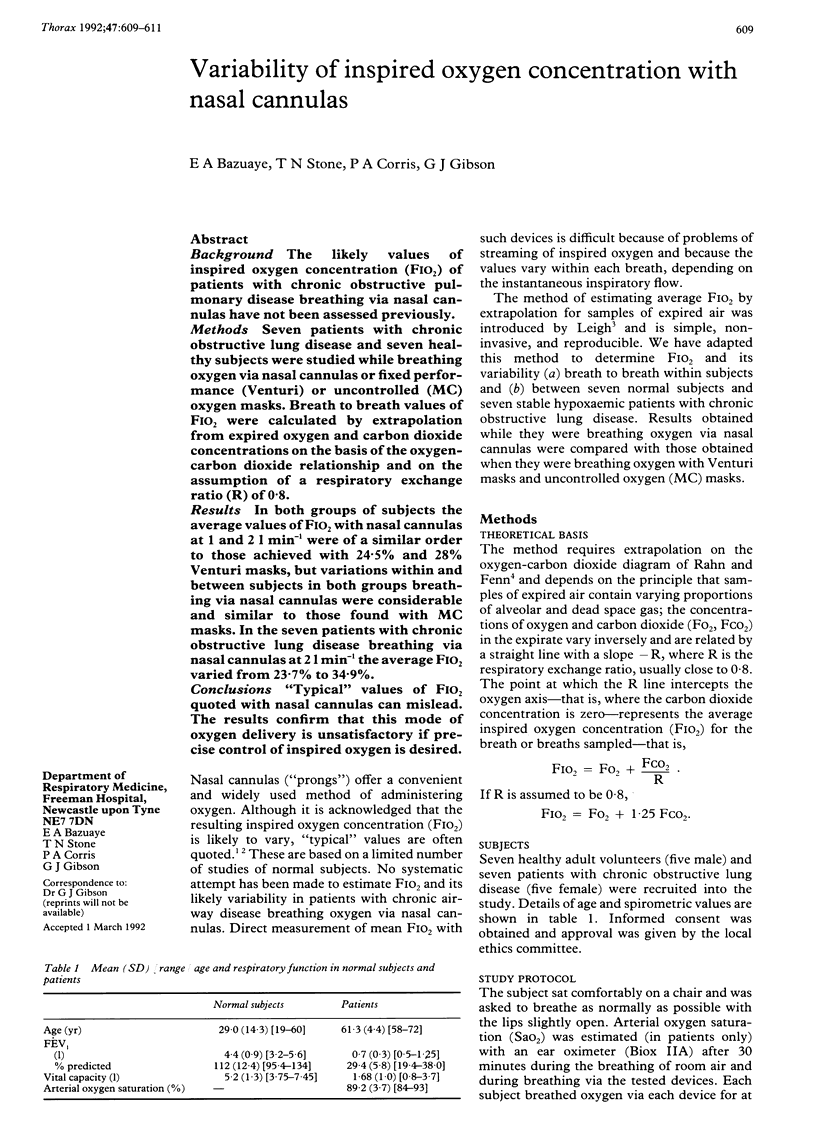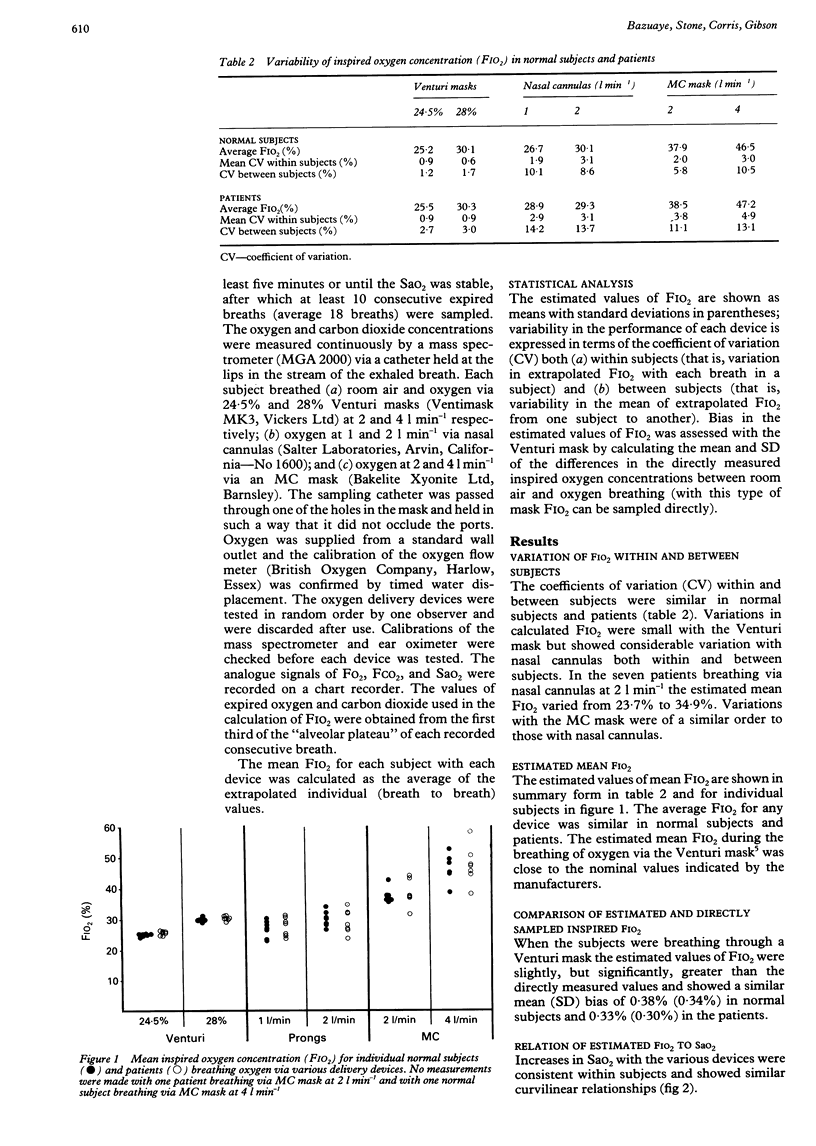Abstract
BACKGROUND: The likely values of inspired oxygen concentration (FIO2) of patients with chronic obstructive pulmonary disease breathing via nasal cannulas have not been assessed previously. METHODS: Seven patients with chronic obstructive lung disease and seven healthy subjects were studied while breathing oxygen via nasal cannulas or fixed performance (Venturi) or uncontrolled (MC) oxygen masks. Breath to breath values of FIO2 were calculated by extrapolation from expired oxygen and carbon dioxide concentrations on the basis of the oxygen-carbon dioxide relationship and on the assumption of a respiratory exchange ratio (R) of 0.8. RESULTS: In both groups of subjects the average values of FIO2 with nasal cannulas at 1 and 2 l min-1 were of a similar order to those achieved with 24.5% and 28% Venturi masks, but variations within and between subjects in both groups breathing via nasal cannulas were considerable and similar to those found with MC masks. In the seven patients with chronic obstructive lung disease breathing via nasal cannulas at 2 l min-1 the average FIO2 varied from 23.7% to 34.9%. CONCLUSIONS: "Typical" values of FIO2 quoted with nasal cannulas can mislead. The results confirm that this mode of oxygen delivery is unsatisfactory if precise control of inspired oxygen is desired.
Full text
PDF


Selected References
These references are in PubMed. This may not be the complete list of references from this article.
- Bethune D. W., Collis J. M. An evaluation of oxygen therapy equipment. Experimental study of various devices on the human subject. Thorax. 1967 May;22(3):221–225. doi: 10.1136/thx.22.3.221. [DOI] [PMC free article] [PubMed] [Google Scholar]
- Bland J. M., Altman D. G. Statistical methods for assessing agreement between two methods of clinical measurement. Lancet. 1986 Feb 8;1(8476):307–310. [PubMed] [Google Scholar]
- CAMPBELL E. J. Respiratory failure: the relation between oxygen concentrations of inspired air and arterial blood. Lancet. 1960 Jul 2;2(7140):10–11. doi: 10.1016/s0140-6736(60)92659-3. [DOI] [PubMed] [Google Scholar]
- Gibson R. L., Comer P. B., Beckham R. W., McGraw C. P. Actual tracheal oxygen concentrations with commonly used oxygen equipment. Anesthesiology. 1976 Jan;44(1):71–73. doi: 10.1097/00000542-197601000-00019. [DOI] [PubMed] [Google Scholar]
- Green I. D. Choice of method for administration of oxygen. Br Med J. 1967 Sep 2;3(5565):593–596. doi: 10.1136/bmj.3.5565.593. [DOI] [PMC free article] [PubMed] [Google Scholar]
- Leigh J. M. Variation in performance of oxygen therapy devices. Anaesthesia. 1970 Apr;25(2):210–222. doi: 10.1111/j.1365-2044.1970.tb00192.x. [DOI] [PubMed] [Google Scholar]


